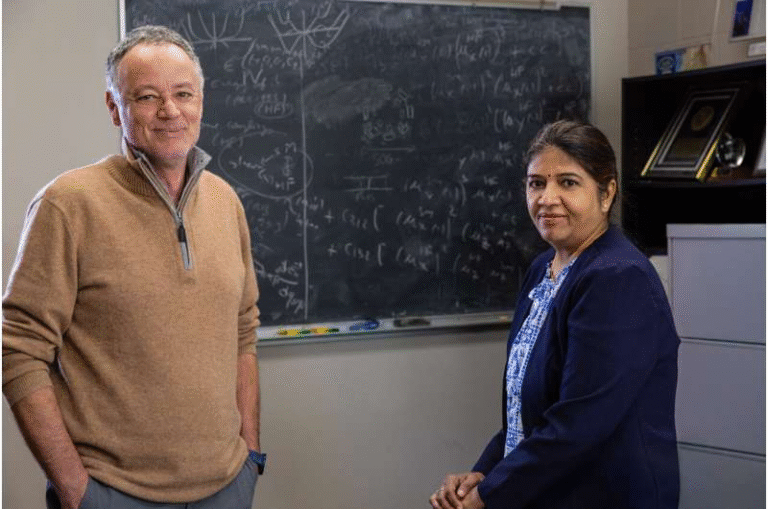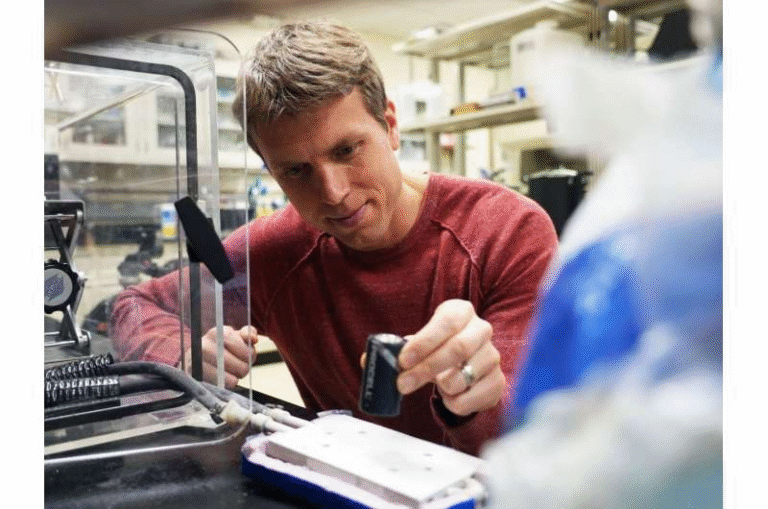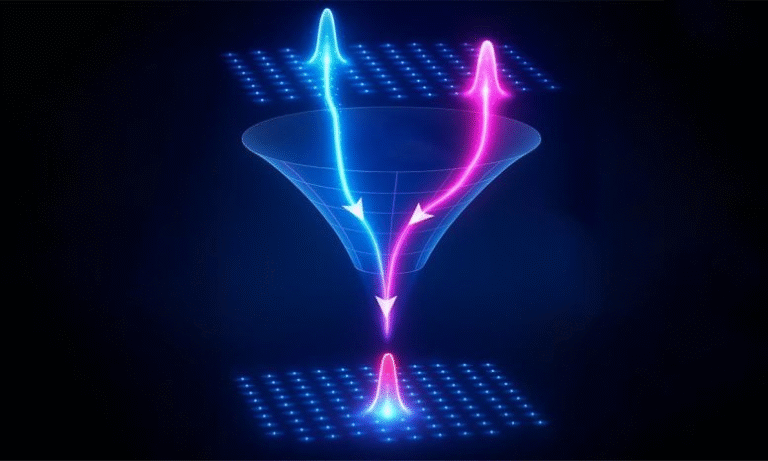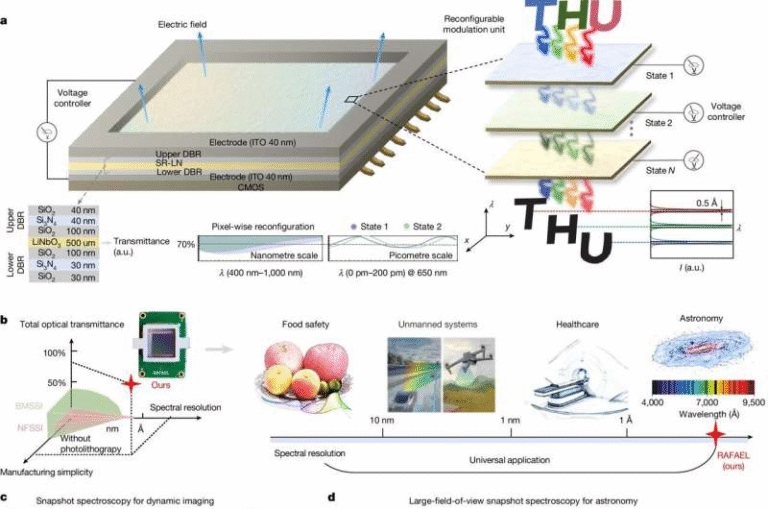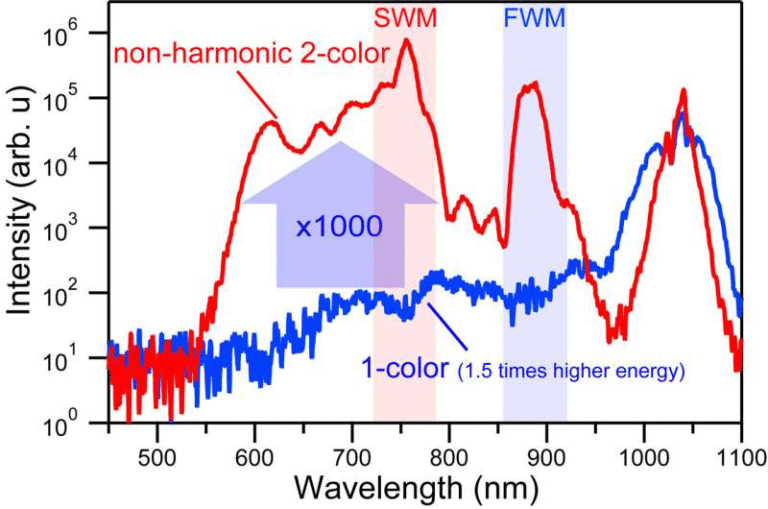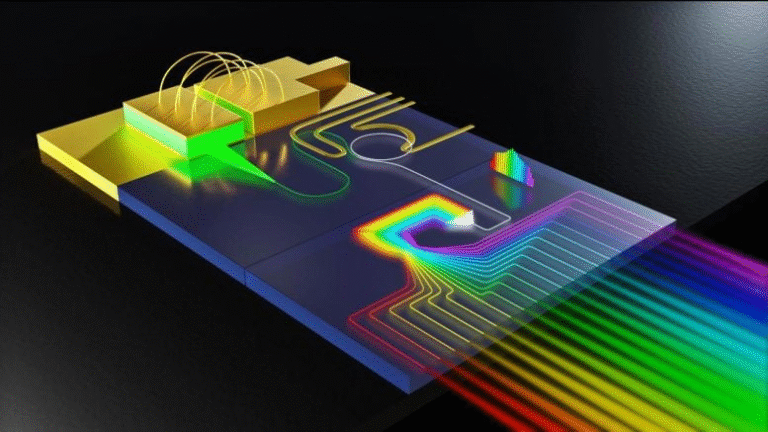Controlled Atomic Defects Reveal How Superconductivity Works in Nickelate Films

A team of scientists has taken a major step forward in understanding how superconductivity emerges in nickelate materials—a family of compounds that has puzzled physicists ever since their discovery. The research, recently published in Physical Review Letters (2025), shows that carefully introducing atomic defects into nickelate thin films can shed light on the mysterious mechanism that allows these materials to conduct electricity with zero resistance.
The study, led by researchers from the Max Planck Institute for Chemical Physics of Solids (MPI-CPfS) in collaboration with Stanford University and École Polytechnique, used extremely high-energy electron irradiation to create controlled levels of disorder in superconducting nickelate films. The results show that as more defects are added, the material’s superconducting transition temperature—known as Tc—drops steadily, eventually disappearing altogether.
This finding isn’t just another observation about how sensitive superconductors can be. It provides direct clues about the type of superconductivity operating in nickelates, helping scientists rule out certain theoretical models and focus on more likely explanations.
What the Researchers Did
The team started with high-quality, infinite-layer nickelate thin films, specifically Nd₀.₈₂₅Sr₀.₁₇₅NiO₂—one of the most thoroughly studied nickelate compounds. These films are known to become superconducting below a certain critical temperature. To probe how disorder affects that state, the researchers bombarded the films with megavolt-energy electrons, each carrying enough energy to knock atoms slightly out of place within the crystal lattice.
This process doesn’t destroy the material but rather introduces atomic-scale defects—essentially tiny disturbances in the otherwise regular arrangement of atoms. Because the technique allows for extremely fine control over the defect density, the researchers could tune the amount of disorder step by step, monitoring how the superconducting properties responded after each exposure.
Their measurements revealed a clear trend: as the number of defects increased, the superconducting Tc decreased, and at a certain point, superconductivity was completely suppressed. The precision of this approach makes it one of the clearest demonstrations so far of how disorder directly impacts superconductivity in nickelates.
Why Disorder Matters
In superconductors, the behavior of electrons depends on how they pair up to move without resistance. These pairs—called Cooper pairs—are extremely sensitive to how the electrons interact with their surroundings. Introducing disorder disrupts this delicate balance.
The key insight from the new work is that the rate at which superconductivity disappears tells scientists something profound about the nature of the superconducting gap—the energy structure that defines how electrons pair up.
If the gap is uniform and sign-preserving (as in conventional s-wave superconductors), non-magnetic impurities don’t affect Tc very much. This is known as the Anderson theorem, which essentially says that s-wave superconductors are immune to this kind of harmless disorder.
But if the gap changes sign in different regions of the electronic structure (for instance, d-wave or s±-wave symmetries), then even small amounts of disorder can break the electron pairs apart. In these cases, Tc drops rapidly as defects are introduced.
That’s exactly what happened in the nickelate films. The strong suppression of Tc indicates that the superconducting order parameter likely changes sign across the Fermi surface, meaning that nickelate superconductivity is unconventional—similar to what’s seen in high-Tc cuprate superconductors.
Why This Finding Is So Important
Nickelates are often compared to cuprates, the famous copper-oxide superconductors discovered in 1986. Both families share similar structural frameworks: they feature square-planar layers of transition-metal and oxygen atoms, which are key to their superconducting behavior.
However, nickelates and cuprates are not identical twins. The electronic structures differ in subtle but crucial ways. Nickelates have fewer electrons in the transition-metal orbitals, a different degree of hybridization with surrounding atoms, and multiple electronic bands near the Fermi level. These distinctions complicate the search for a unified theory of superconductivity across both families.
By showing that nickelates also exhibit sign-changing superconductivity, this new study helps to narrow the theoretical field. It suggests that nickelates may share some of the same fundamental pairing mechanisms as cuprates—possibly driven by electron correlations and spin fluctuations, rather than by the traditional electron-phonon interactions that explain ordinary superconductors like lead or aluminum.
In short, the results strengthen the view that nickelate superconductivity belongs in the “unconventional” camp, which includes cuprates, iron pnictides, and certain heavy-fermion materials.
The Role of Controlled Defects
One of the most remarkable parts of this work is its methodology. Usually, to study the effect of disorder, researchers have to change the chemical composition—say, by substituting atoms or adjusting the oxygen content. But these changes also alter other key parameters like carrier concentration, strain, or crystal symmetry, which makes it hard to isolate the specific effect of disorder itself.
Using electron irradiation avoids that problem. It allows scientists to introduce point defects without changing the chemistry or doping level. In this way, the MPI-CPfS team could create a clean experimental knob for disorder—something rarely achievable in condensed-matter experiments.
Each round of irradiation introduced a controlled number of defects, and after each step, the team measured electrical resistivity and superconducting transitions. They observed that the resistivity increased slightly due to scattering from defects, while Tc dropped in a predictable manner.
This careful, systematic approach enabled them to compare the data directly with theoretical models of pair breaking. The observed pattern fits very well with what’s expected for a sign-changing order parameter, providing some of the clearest evidence to date about the symmetry of the superconducting gap in nickelates.
How This Fits into the Bigger Picture
When nickelate superconductivity was first discovered in 2019 by researchers at Stanford University, it immediately reignited excitement in the condensed-matter community. Scientists had been searching for nickel-based analogues of the cuprates since the 1980s, when the original high-Tc copper oxides were found.
In theory, nickelates should have been close relatives to cuprates because nickel sits just below copper in the periodic table, suggesting similar electron configurations. But for decades, attempts to make superconducting nickel oxides failed. Only with advances in thin-film growth techniques—especially topotactic reduction—did researchers finally manage to stabilize the right composition and oxygen structure to achieve superconductivity.
Since then, nickelate research has exploded. Scientists have synthesized a range of related compounds, adjusted their chemical doping, and probed their electronic structures using techniques such as photoemission spectroscopy, neutron scattering, and resonant X-ray diffraction. Yet, a central question remained: What is the symmetry of the superconducting state?
The new study directly targets that question and provides the strongest experimental evidence yet that the superconductivity in nickelates is not conventional.
Theoretical Context: Understanding Pairing Symmetry
To appreciate why this matters, it helps to understand what “pairing symmetry” means. In any superconductor, electrons form pairs that move together through the lattice. The symmetry of this pairing determines how the superconducting gap behaves around the Fermi surface.
- s-wave: The simplest case, where the gap is uniform and has the same sign everywhere. Found in conventional, low-temperature superconductors.
- d-wave: The gap changes sign in different directions, leading to nodes—points where the superconducting gap goes to zero. This is characteristic of cuprates.
- s±-wave or other sign-changing states: Found in certain iron-based superconductors and potentially in nickelates.
When disorder is introduced, only sign-changing states are sensitive to non-magnetic impurities. That’s why the rapid drop of Tc in this study is such a powerful clue.
Implications for Future Research
This discovery doesn’t close the case—it opens new doors. Scientists can now test additional nickelate compounds, compare results across different levels of doping, and explore how strain, film thickness, and lattice distortions influence superconductivity.
The study also sets a benchmark for material quality. Because superconductivity in nickelates is so sensitive to disorder, researchers must carefully control sample synthesis and processing. Even small imperfections can dramatically affect Tc, so understanding defect tolerance will be essential for any eventual applications.
Another exciting direction will be comparing how magnetic vs. non-magnetic disorder affects these systems. If magnetic impurities break pairs even faster, that would provide further evidence of an unconventional pairing state.
Finally, the same method—electron irradiation—could be extended to study other correlated oxides such as cuprates, ruthenates, or iron pnictides, allowing for a unified comparison of how disorder influences different families of unconventional superconductors.
Why the Result Feels Familiar Yet New
This study connects the dots between two major lines of research: the established field of high-temperature cuprate superconductivity and the emerging world of nickelate superconductivity. The parallels are striking. Both materials have layered structures, both require precise synthesis, and both seem to share an unconventional, sign-changing order parameter.
But nickelates also bring fresh complexity. Their multi-band electronic structure, different orbital composition, and unique chemical environment might host new forms of superconductivity unseen in cuprates. This makes them not just imitators but a new platform to test theories of correlated electron behavior.
As the field continues to mature, experiments like this will help bridge the gap between empirical observations and theoretical understanding. Controlled disorder has now become one of the most precise tools in the condensed-matter toolkit—and in this case, it’s brought the physics community one big step closer to unraveling the mystery of how nickelates superconduct.
